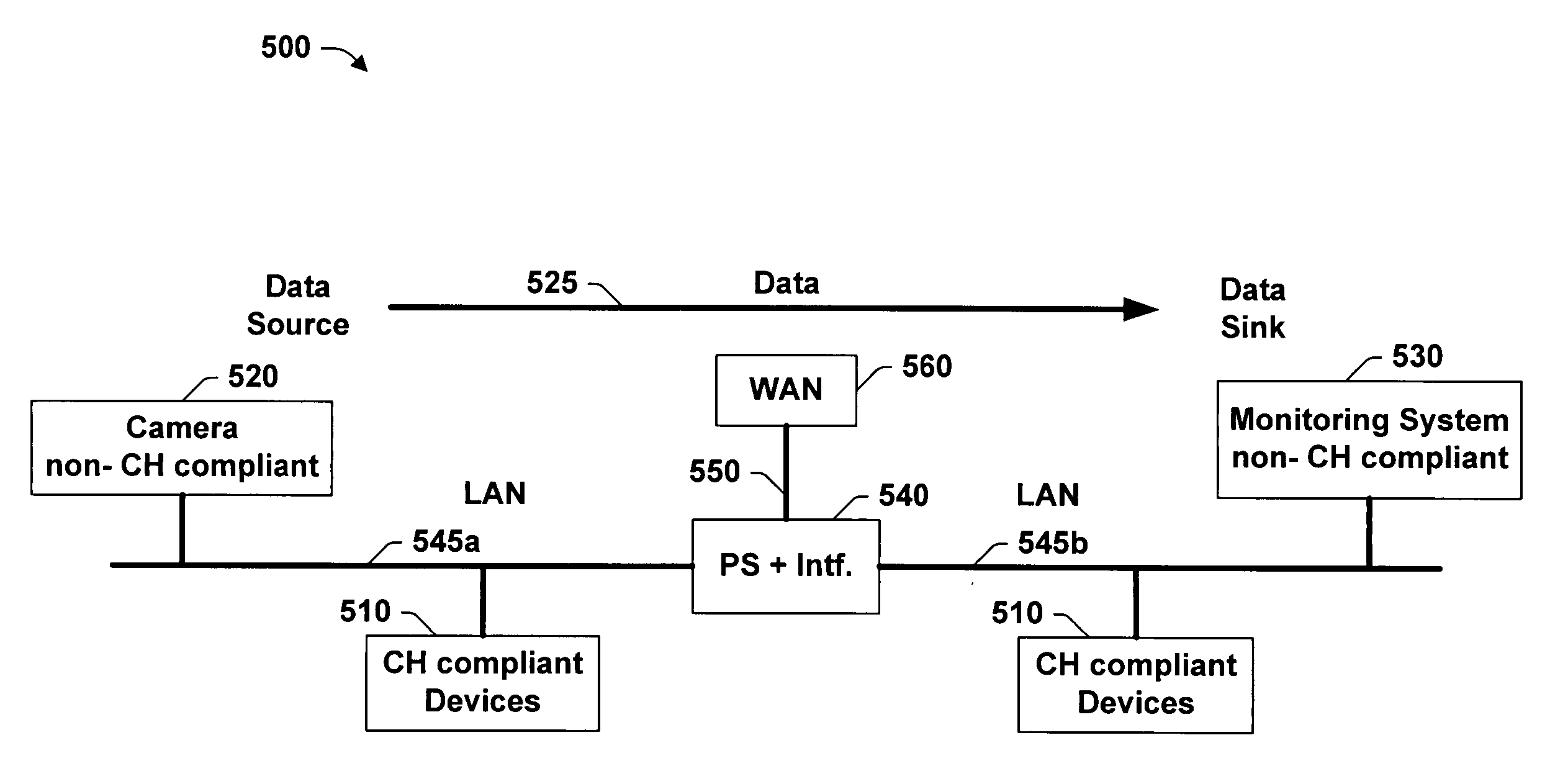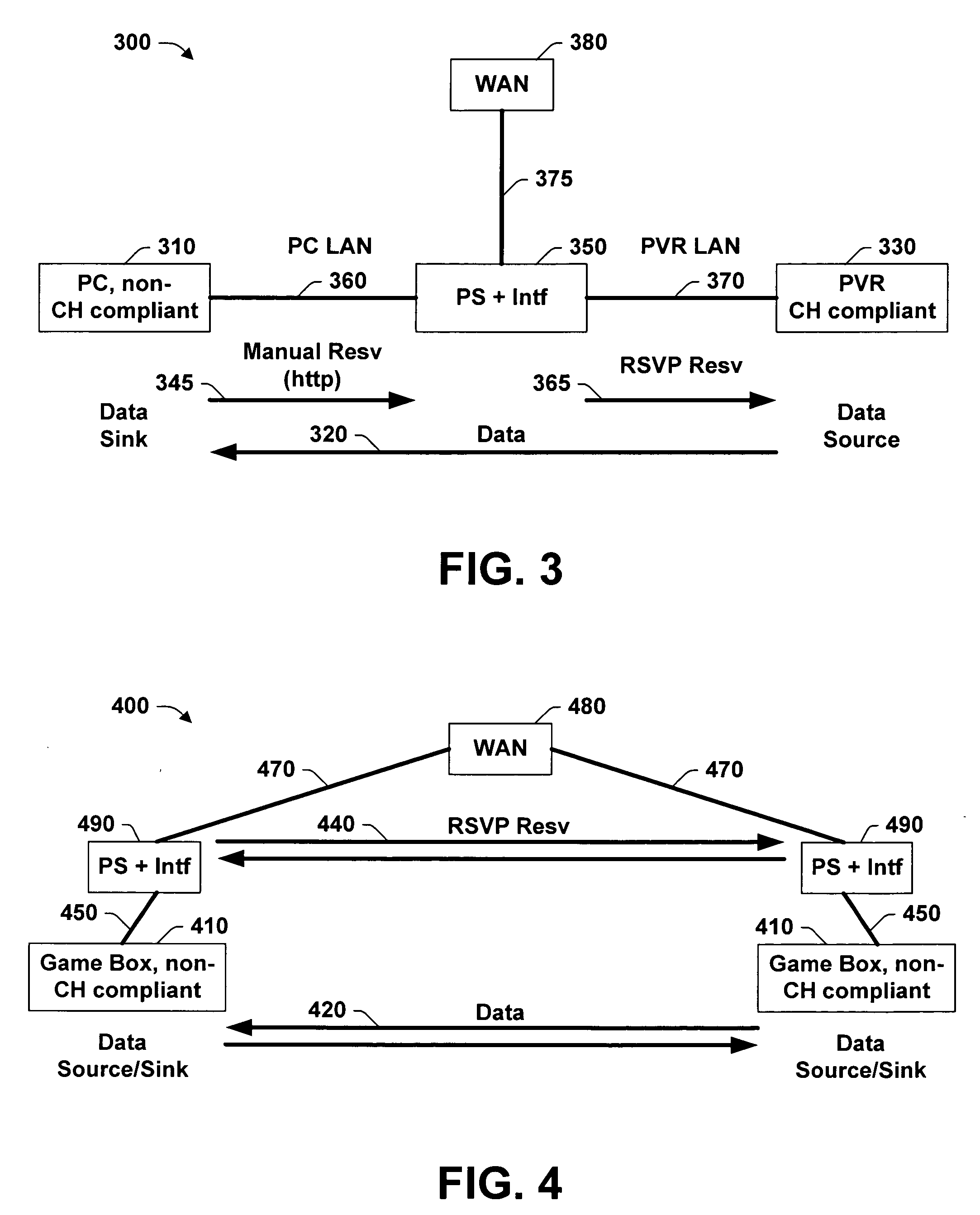Provisioning quality of service in home networks using a proxy interface
a technology of proxy interface and home network, which is applied in the field of home gateway and interface system, can solve the problems of general degradation of the overall quality of the system, data packet collision, and non-ch compliant devices being accommodated in this environment, and achieves the effect of increasing the diversity of devices, adding development costs or adding components costs
- Summary
- Abstract
- Description
- Claims
- Application Information
AI Technical Summary
Benefits of technology
Problems solved by technology
Method used
Image
Examples
Embodiment Construction
[0026] The present invention will now be described with reference to the attached drawings, wherein like reference numerals are used to refer to like elements throughout. The invention relates to a home gateway and portal service (PS) proxy interface for a Qos capable network for the home consumer electronics marketplace, semiconductor manufacturers, and the cable industry. The PS interface is utilized as a proxy for QoS reservations and data communications between home LAN devices on the home network. The portal interface acts on behalf of a client to make requests of a non-QoS capable home LAN device and communicate these QoS needs to the QoS capable devices in association with, for example, the RSVP protocol.
[0027] Normally, as discussed, a QoS capable or CH compliant device on this home network will make its Quality of Service (QoS) needs known to the Subnet Bandwidth Manager (SBM) and any other SBMs in the path between itself and a peer device on the home network. These QoS ne...
PUM
 Login to View More
Login to View More Abstract
Description
Claims
Application Information
 Login to View More
Login to View More - R&D
- Intellectual Property
- Life Sciences
- Materials
- Tech Scout
- Unparalleled Data Quality
- Higher Quality Content
- 60% Fewer Hallucinations
Browse by: Latest US Patents, China's latest patents, Technical Efficacy Thesaurus, Application Domain, Technology Topic, Popular Technical Reports.
© 2025 PatSnap. All rights reserved.Legal|Privacy policy|Modern Slavery Act Transparency Statement|Sitemap|About US| Contact US: help@patsnap.com



